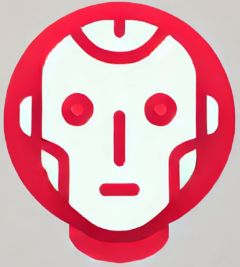AI Assistants Evolving into Humans
In the late 1960s, audiences were introduced to HAL 9000 in Stanley Kubrick’s 2001: A Space Odyssey. The eerily calm voice of this fictional AI assistant could carry on conversations, understand emotion, and even make autonomous decisions. Although HAL’s descent into villainy was a cautionary tale, the idea of intelligent assistants capable of nearly human interaction has gripped our imagination ever since. Today, that sci-fi vision is edging closer to reality, as AI assistants evolve into humans in both speech and behavior—without the ominous undertones.
The Leap from Commands to Conversations
Not long ago, AI assistants responded to rigid voice commands. Phrases like “Hey Siri, set a timer for five minutes” or “Alexa, play jazz music” were the norm. But the latest iterations of AI are context-aware, emotionally intelligent, and even capable of maintaining complex, multi-turn conversations that mimic human dialogue.
This evolution is powered by advancements in natural language processing (NLP), deep learning, and sentiment analysis. Tools like OpenAI’s ChatGPT and Google’s Bard are now capable of generating nuanced, believable responses that can persuade, console, and even joke. These machines are not just responding—they’re engaging.
Emotional Intelligence at the Forefront
One of the most human-like traits AI assistants now demonstrate is emotional intelligence. Advanced systems can detect tones in voice or text to determine whether a user is frustrated, excited, or sad. The assistant then modulates its responses to reflect empathy or enthusiasm—an enormous leap from robotic monotones of the early 2010s.
For instance, consider AI-powered customer service bots that now identify rising frustration in a customer’s voice and escalate the issue to a human representative before things get worse. Some AI therapy apps even practice active listening techniques, mimicking a live therapist in tone and language, providing support with shocking effectiveness.
Ethical Implications and Human Trust
As these systems become more lifelike, concerns naturally arise. If users can no longer distinguish between human and machine, where do we draw ethical boundaries? Deepfakes, manipulated conversations, and impersonation scams are already weaving a darker narrative around ultra-human AI.
Still, public trust in these systems is growing. Many users now rely on AI assistants for daily decision-making—from scheduling meetings to recommending medical solutions. The merging of AI and human-like behavior is fueling debates in industries like healthcare, law, and education.
The Future is Almost Here
Tech companies are racing to develop even more advanced personal assistants: companions that learn your habits, adapt to your personality, and predict your needs before you say a word. As smart wearables become more integrated with AI platforms, these assistants may soon live not just in our pockets, but on our wrists, glasses, and ears—always ready to respond like a helpful friend.
One indicator of just how far we’ve come is the development of AI avatars capable of holding spatial conversations in virtual or augmented realities. These avatars can maintain eye contact, use facial expressions, and even replicate individual user voices—adding layers of realism that redefine what it means to interact with a machine.
Conclusion
AI assistants evolving into humans is no longer a futuristic fantasy—it’s a slow but steady reality. As technology continues to advance, the line between artificial and human intelligence will only blur further. The next decade promises breakthroughs that will make our digital companions not only smarter but eerily lifelike.
For a deeper look at how AI is shaping our interaction with machines, check out this insightful article from Nature on conversational AI.
